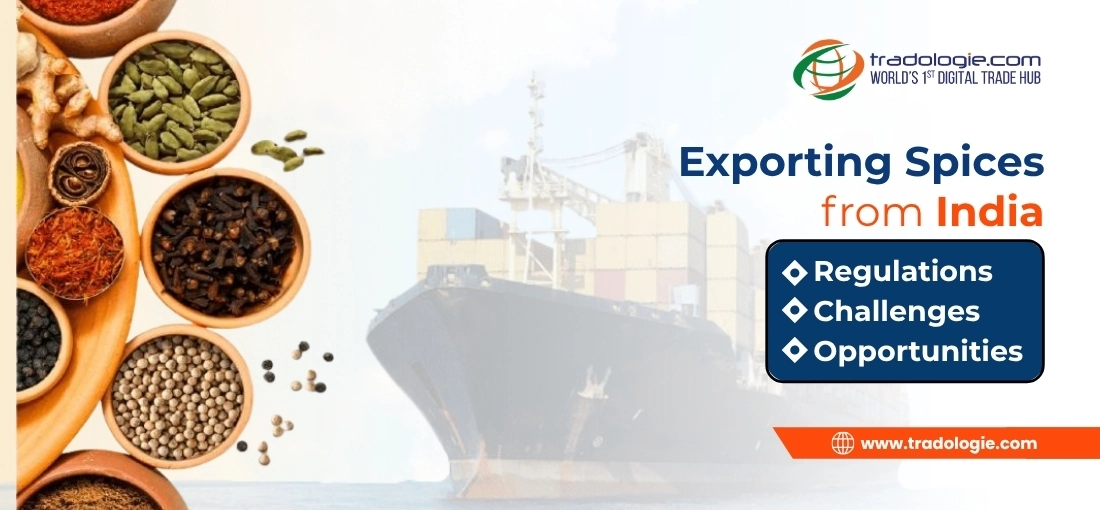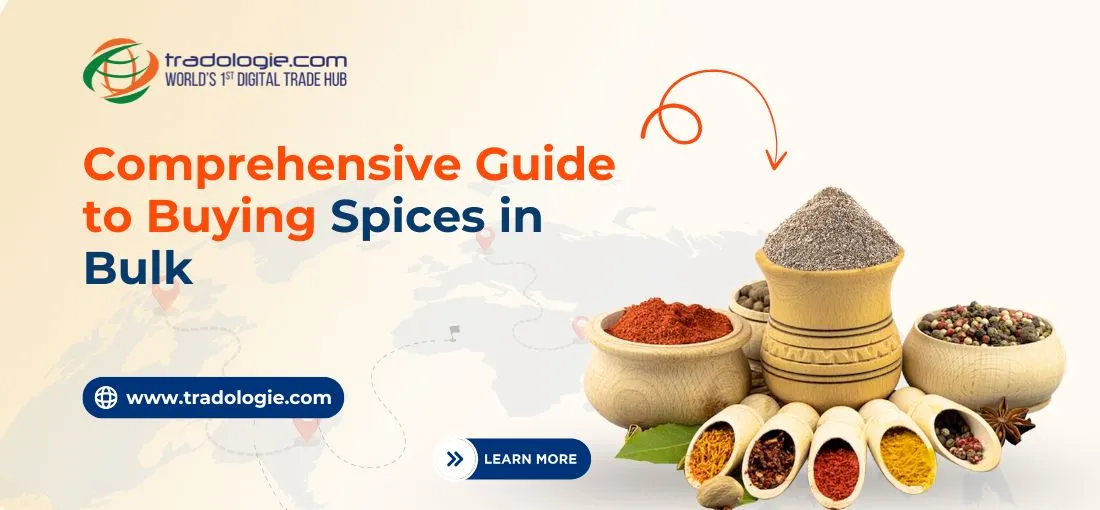India is a country rich in agricultural products and known as the land of spices. This country produces and exports more turmeric than any other country in the world. India accounts for more than 85% of the world's turmeric production, and it dominates the global turmeric market.
Are you also thinking of exporting turmeric from India? If yes, then this is the right time to start turmeric export from India. To learn more about turmeric exports from India, we will try to give you all the information in this blog post, from the basics of exporting turmeric from India to the updated statistics of turmeric exports that will lead you to become a successful turmeric exporter.
Let’s discuss the top Turmeric-producing countries.
Top 5 Turmeric-producing countries
Let's explore the table first.
|
Rank |
Turmeric Producing Countries |
Estimated Production (Million Tons) |
|
1 |
India |
8 |
|
2 |
China |
0.5 |
|
3 |
Thailand |
Thailand 0.4 |
|
4 |
Myanmar |
0.35 |
|
5 |
Peru |
0.3 |
Top Turmeric Producing States in India:
- Telangana
- Leading Producer
- Major districts: Nizamabad, Karimnagar, Adilabad.
- Known for: High-curcumin varieties.
- Maharashtra
- Major districts: Sangli, Nanded, Bhandara
- Known for: Bold rhizome size and good yield.
- Tamil Nadu
- Major districts: Erode, Salem, Dharmapuri.
- Known for: Erode Turmeric (GI tagged).
- Andhra Pradesh
- Major districts: Guntur and Krishna Nagar
- Known for: Quality turmeric with good aroma
- Karnataka
- Major districts: Belgaum, Chikmagalur, Mysore.
- Known for: Traditional organic cultivation.
Turmeric Export Data from India (2023–24)
With its huge production capacity and growing global interest in natural products, India continues to dominate the global turmeric trade .
- As per the recent turmeric trade data for FY 2023-24:
- Total Quantity Exported:167,281 metric tons
- Total Export Value: USD 212.65 million
- Number of Active Exporters:Over 380
- Global Market Share:Over 62% of global turmeric exports
These numbers highlight not only India's reliable supply network but also its consistent ability to meet global quality standards. The Indian Spices Board has set an ambitious target of USD 1 billion in turmeric exports by 2030, reflecting growing confidence in India’s export potential
Top 5 Turmeric Exporters in India?
India has a strong network of turmeric exporters that cater to the ever-growing global demand. Based on the latest turmeric export data, here are the top 5 turmeric exporters who are making their mark internationally:
- A.G. Agro Exports
- Basic Ayurveda Export
- Bhagyashree Exports
- Capricorn Ayurvedas
- Godrej International
Let’s discuss how to export Turmeric from India.
Ultimate Guide to Turmeric Export from India
As we know, India is the world's largest producer and exporter of turmeric, making it a viable business to start a haldi (turmeric) export company from there. Here are the essential steps to get you going: first of all, we talk about the documents for Turmeric exports from India.
Mandatory Documents for Turmeric Export from India:
- Business Registration with MCA
- GST Registration
- Import Export Code
- CRES Certificate from the Spice Board of India
- APEDA
Steps to Start Turmeric Export from India:
Step: 1: Business Registration with MCA:First things first, you must register your company with the Ministry of Corporate Affairs. This step is mandatory as well as vital for the traders to indulge in the business of turmeric and be willing to export turmeric from India
Step: 2: Export Documentation:Secondly, to export Turmeric from India, you require complying with various legal requirements and obtaining the necessary export documentation. Some essential documents include:
- Certificate Of Origin
- Invoice
- Packing List
- Tax Invoice
Step: 3: Export license: The third step for turmeric export is that you should have your export license ready. This is the most essential document for exporting turmeric from India. So, now you must apply for an export license from the Directorate General of Foreign Trade (DGFT) or its regional offices.
Step: 4: Certificate of Origin:Now we talk about the next step, in this step, you need another important document, which is the Certificate of Origin.
Certificates of Origin certify that goods in a shipment are wholly obtained, produced, manufactured, or processed in a particular country. Local chambers have the unique position to operate as the natural and trusted agent in issuing CoOs, which can issue two types:
(a) Preferential - Derived from reciprocal Regional Trade Agreements (RTAs) or non-reciprocal Preferential Trade Agreements (PTAs), they grant preferential/duty-free treatment to qualifying goods.
(b) Non-Preferential - Derived from the trade partner Country's national legislation and is used to implement trade remedies and other trade restrictions when MFN duties are applied. Non-preferential CoOs do not provide any tariff preference.
Step: 5: Phyto-Sanitary Certificates: Phytosanitary certificates are issued to indicate that consignments of plants, plant products, or other regulated articles meet specified phytosanitary import requirements and are in conformity with the certifying statement of the appropriate model certificate.
This certificate confirms that the turmeric is free from pests and diseases. This is a requirement for most importing countries. You will need to apply for this certificate through the Plant Quarantine Organisation in India, IndiaFilings says.
Step: 6: Obtain HS Code- 091030: In this step, if you want to obtain export-import statistics and updated market insights, you need to use the correct Harmonized System (HS) code, specifically HS Code 091030.
This code is used for classifying turmeric (curcuma) and allows access to detailed trade data.
Step: 7: Commercial Invoices: Lastly, you need to prepare a detailed commercial invoice. It is a document that details the transaction between you (the seller) and your buyer. It includes information about the goods sold, their value, and the payment terms.
It's also an essential document for accounting and tax purposes, as it helps you keep track of your sales revenue. Commercial invoices are critical documents for organizations engaged in international trade. It’s an essential tool for customs clearance, legal protection, and financial record-keeping
Conclusion
Through this blog, we all know that India is a global leader in the turmeric market in terms of both production and export. So, this is the perfect time to get into the turmeric export business. Nowadays, the demand for high-curcumin varieties and organic turmeric is rising.
However, if you want to tap into the turmeric export business, you sould follow this detailed process. But without proper guidance, this process is very complicated and time-consuming.
If you want this to be easy for you, then you need to get the help of tradologie.com, their export manager will guide you through the whole process of turmeric export. By connecting to this platform, you save time and money. Visit Tradologie.com – your one-stop B2B trade platform for hassle-free global spice trade.



.webp)

